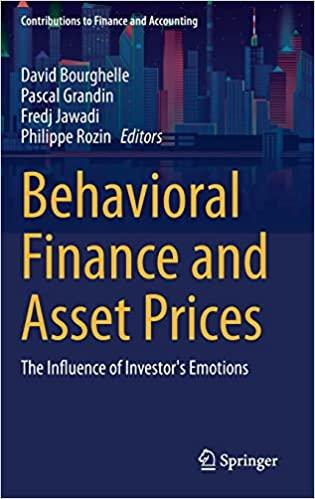Question
1. In an agreement to exchange dollars for euros in 3 months at a price of $.090 per euro, the price is the: A) Fixed
1. In an agreement to exchange dollars for euros in 3 months at a price of $.090 per euro, the price is the:
A) Fixed exchange rate
B) Money Exchange Rate
C) Forward Exchange Rate
D) Spot Exchange Rate
2. Mutual funds which allow shares to be redeemed at any time at a price that is tied to the asset value of the fund are known as:
A) Asset-based funds
B) Open-End Funds
C) Closed-End Funds
D) Redeemable Funds
3. Which of the following statements most accurately describes the task of bank asset management? A) Banks seek the highest returns possible subject to minimizing risk and making adequate provisions for liquidity. B) Banks seek to have the highest liquidity possible subject to earning a positive rate of return on their operations. C) Banks seek to prevent bank failure at all cost; since a failed bank earns no profit, liquidity needs supersede the desire for profits. D) Banks seek to acquire funds in the least costly way.
4. Bankers' concerns regarding the optimal mix of excess reserves, secondary reserves, borrowings from the Fed, and borrowings from other banks to deal with deposit outflows is an example of A) liability management. B) liquidity management. C) managing interest rate risk. D) managing credit risk.
5. Investment banks purchase new security issues hoping to make a profit. This is called:
A) Syndicating
B) Reinsuring
C) Factoring
D) Underwriting
6. The Federal Open Market Committee's "balance of risk" is an assessment of whether, in the future, its primary concern will be:
A) Higher inflation or a stronger economy
B) Higher exchange rates or higher unemployement
C) Lower inflation or a stronger economy
D) Higher inflation or a weaker economy
7. The strongest argument for an Independent central banks rests on the view that subjecting the bank to more political pressures would impart:
A) A disinflationary bias to monetary policy
B) A deflatinary bias to monetary policy
C) A countercyclical bias to monetary policy
D) An inflationary bias to monetary policy
8. You own 2000 acres of farmland in California and grow feed corn, currently selling at 4$/bushel. You expect to harvest 2000 bushels per acre in August. Would you take any action regarding the future? What instrument would you use? Futures, Forwards, or Options or etc.
Step by Step Solution
There are 3 Steps involved in it
Step: 1

Get Instant Access to Expert-Tailored Solutions
See step-by-step solutions with expert insights and AI powered tools for academic success
Step: 2

Step: 3

Ace Your Homework with AI
Get the answers you need in no time with our AI-driven, step-by-step assistance
Get Started


